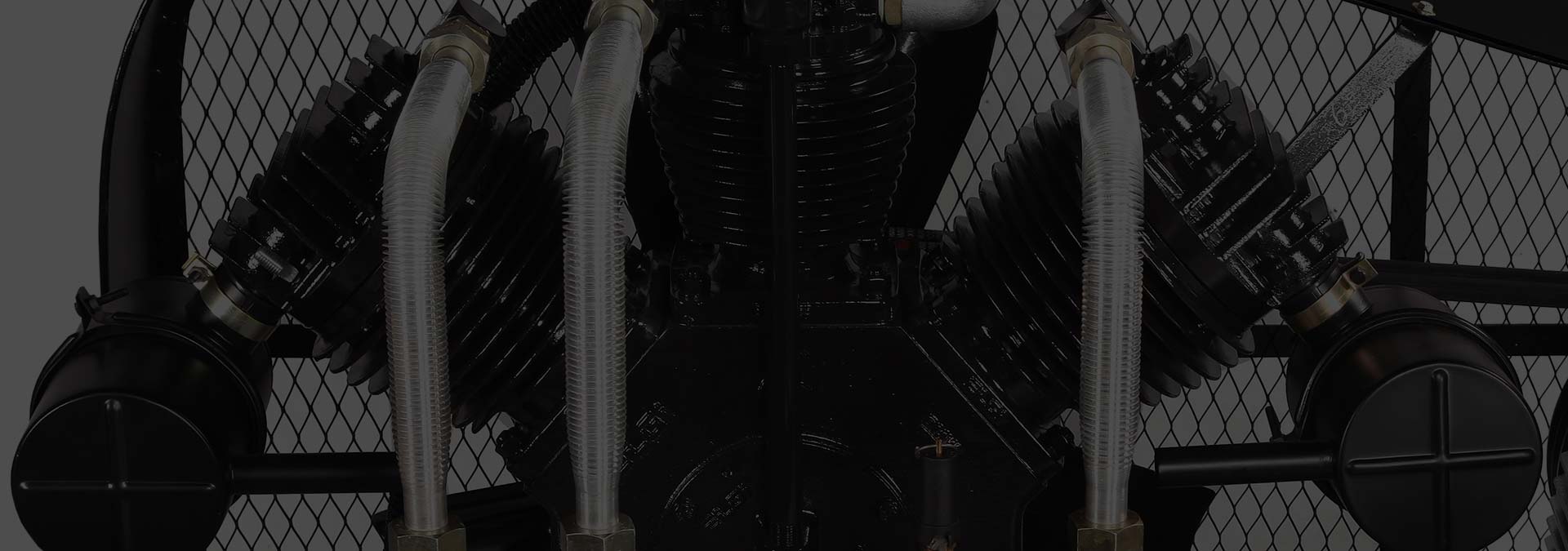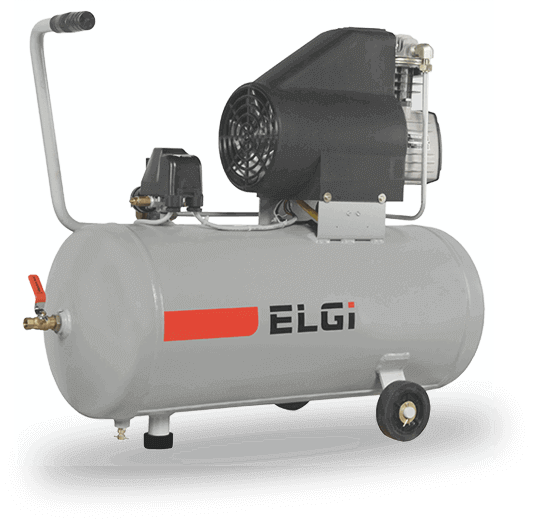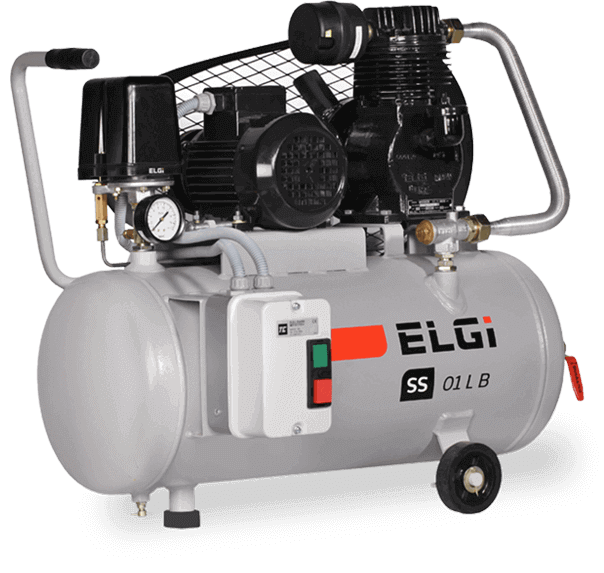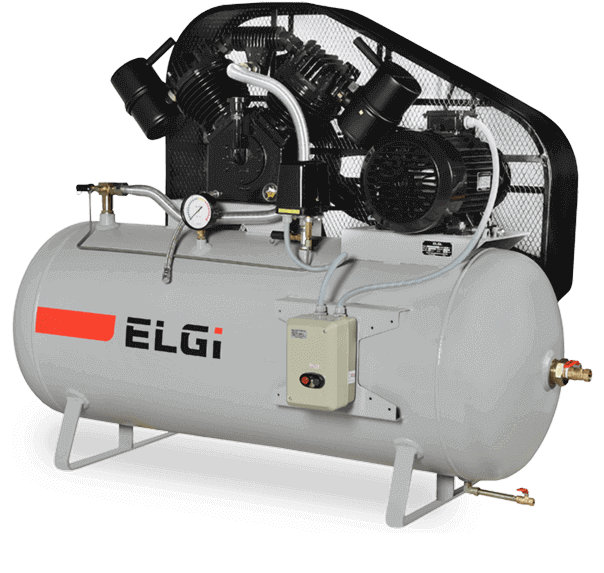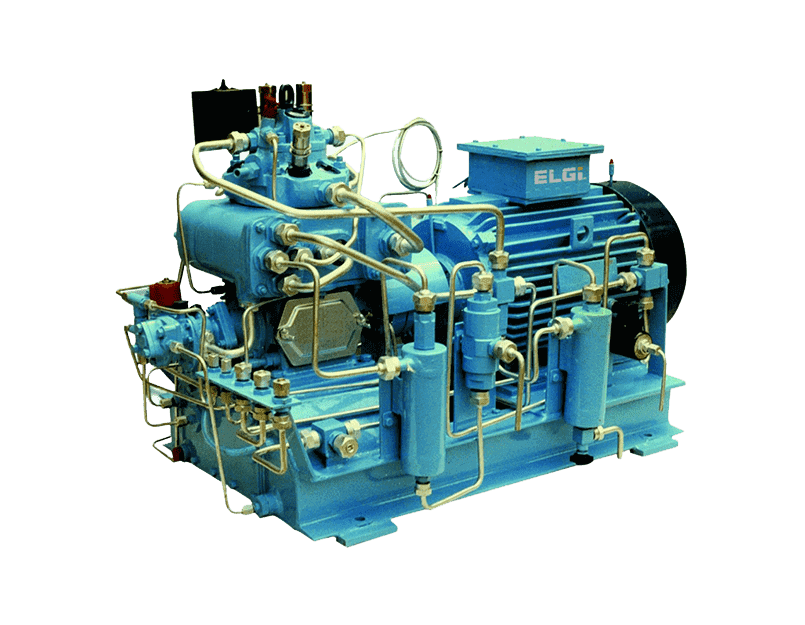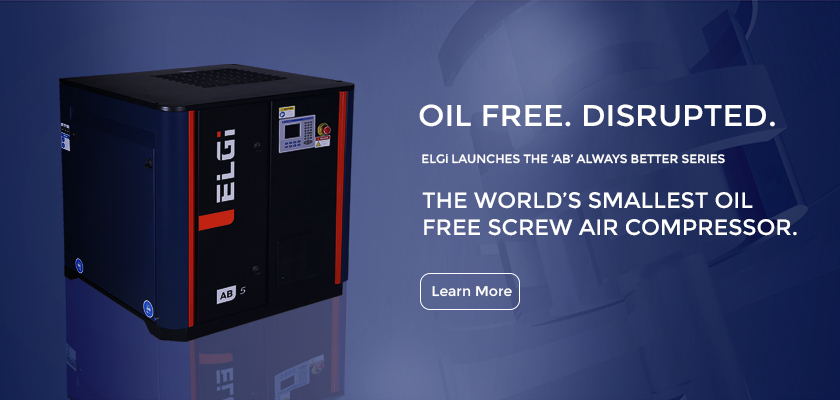WHAT ARE RECIPROCATING COMPRESSORS?
A reciprocating compressor is a type of positive displacement compressor that operates through the reciprocating motion of a piston within a cylinder. It transforms electrical energy into compressed air through a series of intricate processes. In the case of oil-lubricated piston air compressors, the key element is the piston, a movable component housed within a cylinder. As the piston moves back and forth, driven by an electric motor or an internal combustion engine, it alternately compresses and displaces air, generating compressed air.
Lubrication is crucial in enhancing the efficiency and durability of these compressors. Oil reduces friction between moving parts, ensuring smooth operations and preventing premature wear and tear. In addition to enhancing performance, this lubrication also aids in cooling, as it absorbs heat generated during compression.
Types include single-stage reciprocating air compressors, two-stage reciprocating air compressors, oil-free and belt-drive compressors, high-pressure units, and portable and stationary options. Each type is tailored to specific applications, ensuring efficiency, reliability, and flexibility in delivering compressed air based on distinct industry needs.
Oil-lubricated reciprocating compressors are used in various industries, from manufacturing and automotive to construction and beyond. Their versatility and ability to deliver high-pressure air make them indispensable for powering pneumatic tools, operating machinery, and facilitating numerous industrial processes.
At the heart of an oil-lubricated piston air compressor is the reciprocating motion of a piston. This piston is housed within a cylinder, and a crankshaft controls its movement. The crankshaft converts rotary motion into the back-and-forth motion of the piston. During the intake stroke, the piston moves away from the cylinder head, creating a partial vacuum within the cylinder. This vacuum draws air into the cylinder through an intake valve. The air is at atmospheric pressure during this phase. Once the air is drawn into the cylinder, the compression stroke begins. The piston moves towards the cylinder head, compressing the air within the confined space. This compression increases the air pressure significantly, often to the levels required for various industrial applications.
The critical role of the lubrication system comes into play throughout this process. The cylinder walls, piston rings, and other moving parts require lubrication to minimise friction. The lubricant, typically oil, is introduced into the compression chamber. It forms a thin film on the cylinder walls, ensuring the piston’s smooth and friction-free movement. This lubrication reduces wear and tear and prevents overheating by dissipating the heat generated during compression.
Following the compression stroke, the piston undergoes the displacement stroke. In this phase, the piston moves away from the cylinder head again, expelling the compressed air from the cylinder. The air exits through an exhaust valve at a higher pressure than during the intake stroke.
This intake, compression, and displacement cycle repeats continuously to provide a steady supply of compressed air. The ongoing lubrication of moving parts maintains the operation’s efficiency and smoothness.
- Using oil for lubrication minimises friction, resulting in smoother piston movement and increased overall efficiency.
- Lubrication reduces wear and tear on moving parts, extending the lifespan of the compressor and contributing to long-term durability.
- Oil serves a dual purpose by reducing friction and absorbing and dissipating the heat generated, preventing the compressor from overheating.
- Oil-lubricated piston compressors are capable of delivering high-pressure air, making them suitable for applications requiring substantial compressed air power.
- These compressors find applications in various industries. An air compressor for spray painting is essential for achieving smooth and professional finishes in various painting applications. An efficient air compressor for pneumatic tools provides the necessary pressure to drive pneumatic equipment for tasks such as nailing, stapling, or sanding. An air compressor for the garage proves invaluable for powering air tools, inflating tires, and facilitating a range of automotive maintenance tasks.
The robust design and effective lubrication make oil-lubricated piston compressors reliable performers in demanding industrial environments.
These compressors’ versatility allows them to adapt to different applications, providing compressed air for diverse industrial processes. Industrial piston compressors are robust machines built to withstand heavy-duty usage in industrial settings.
The reciprocating motion and oil lubrication have been proven and refined over time, making oil-lubricated piston compressors a trusted choice for compressed air needs.
Routine maintenance is simplified due to the straightforward design, which contributes to ease of service and minimises downtime.


